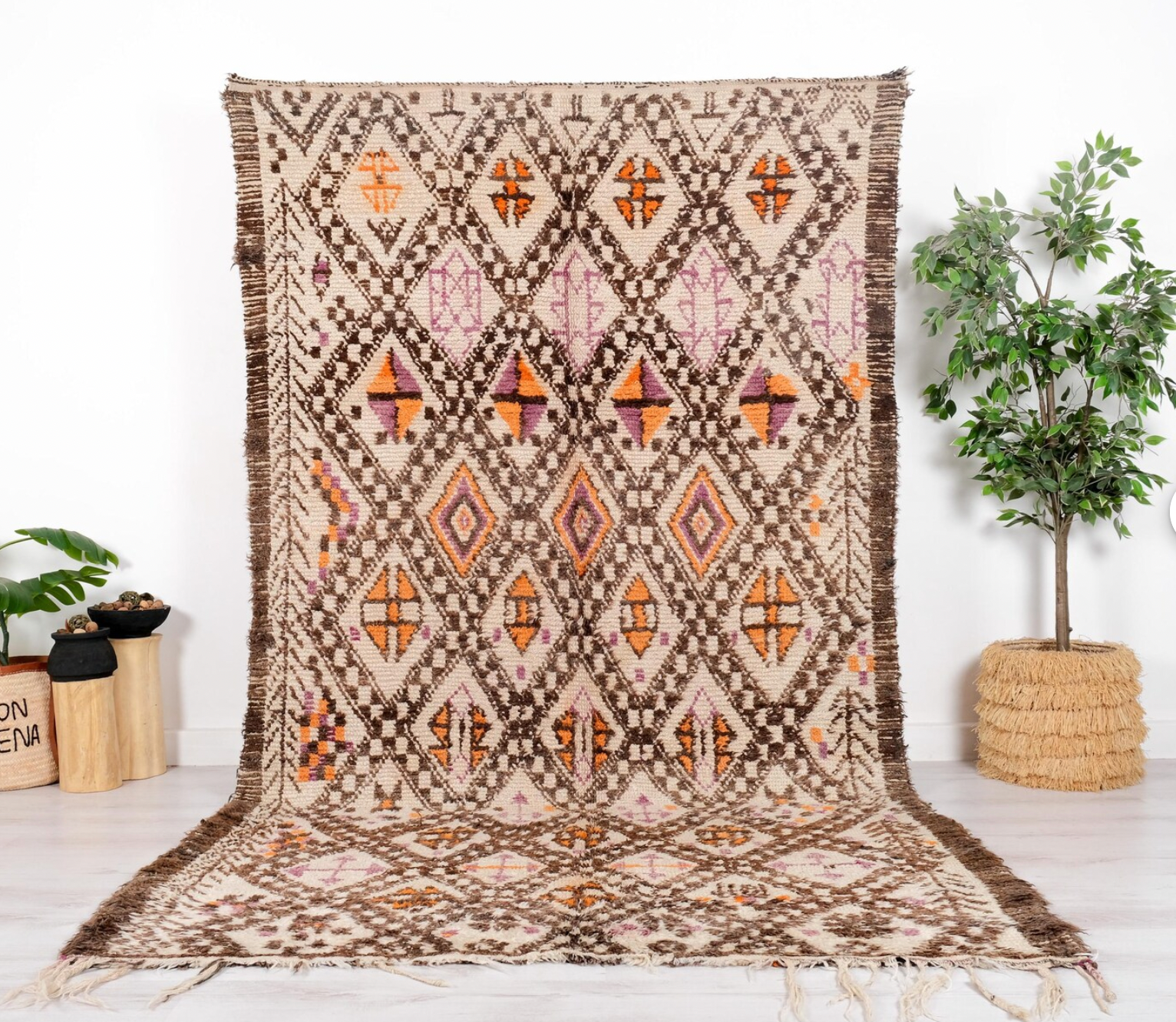Woven into every Moroccan rug is a message — a whisper from the hands of women who came before. A language of lines, curves, and colours that speak not only to the eye, but to the soul.
For centuries, Berber women across the Atlas Mountains and beyond have used weaving not just as a craft, but as a form of expression — one passed from mother to daughter in the absence of written words. Each motif tells a story. Each thread carries memory. Together, they form a secret language — at once protective, poetic, and deeply personal.
Here are just a few of the symbols you might discover beneath your feet.
☽ The Baraka Hand
Also known as the Khamsa or Hamsa, this five-fingered symbol offers divine protection. Woven into rugs to ward off evil, it also calls in baraka — the sacred blessing that brings peace, abundance, and spiritual strength to a home.
◇ Diamond Eyes
A central motif in many Moroccan rugs, the diamond shape represents the female form, fertility, and watchful protection. Some say it is the eye that sees all — guiding the weaver and guarding the journey ahead.
≈ Water Lines (Zigzags)
In the arid landscapes of North Africa, water is life. Zigzag patterns symbolise flowing rivers, rainfall, and the invitation of renewal. They echo the rhythm of life and the prayers of desert women for nourishment and sustenance.
△ Mountain Peaks
Stacked triangles and sharp chevrons pay homage to the Atlas Mountains — home, shelter, and spiritual protector. These motifs speak of strength, rootedness, and the enduring connection to ancestral land.
( ) Fertility Symbols
Curves, crescents, and open lozenges are woven to bless the womb, honour the cycle of life, and ensure abundance. These shapes often celebrate a weaver’s femininity and dreams of lineage, love, and home.
✣ The Comb (Tisslit)
Symbol of the weaver herself — the comb represents both the act of creation and the sacred rituals of femininity. It’s a nod to her power to shape, form, and bring beauty into being.
X Crosses and Repeats
Often interpreted as a symbol of balance, connection, and grounding. Some believe it represents the union of male and female, or the four cardinal directions — orienting the spirit in the world.
◎ Amulets and Protective Symbols
Squares within squares, repeated hooks, or tiny talismans scattered through the design act as spiritual shields — protecting the home, body, and soul from unseen harm.
Teapot or Hospitality Motifs
While less common in tribal rugs, occasional depictions of teapots, serving vessels, or communal items reflect the deep cultural reverence for hospitality, storytelling, and shared warmth — central values in Moroccan life.
Reading Between the Threads
No two weavings are alike — and no symbol stands alone. The beauty of a Berber rug lies in its layers of meaning: protection, passion, ancestry, resilience.
To own one is not only to bring warmth to your home — it is to hold a story in your hands. A secret language, once whispered across the loom, now passed on to you.

